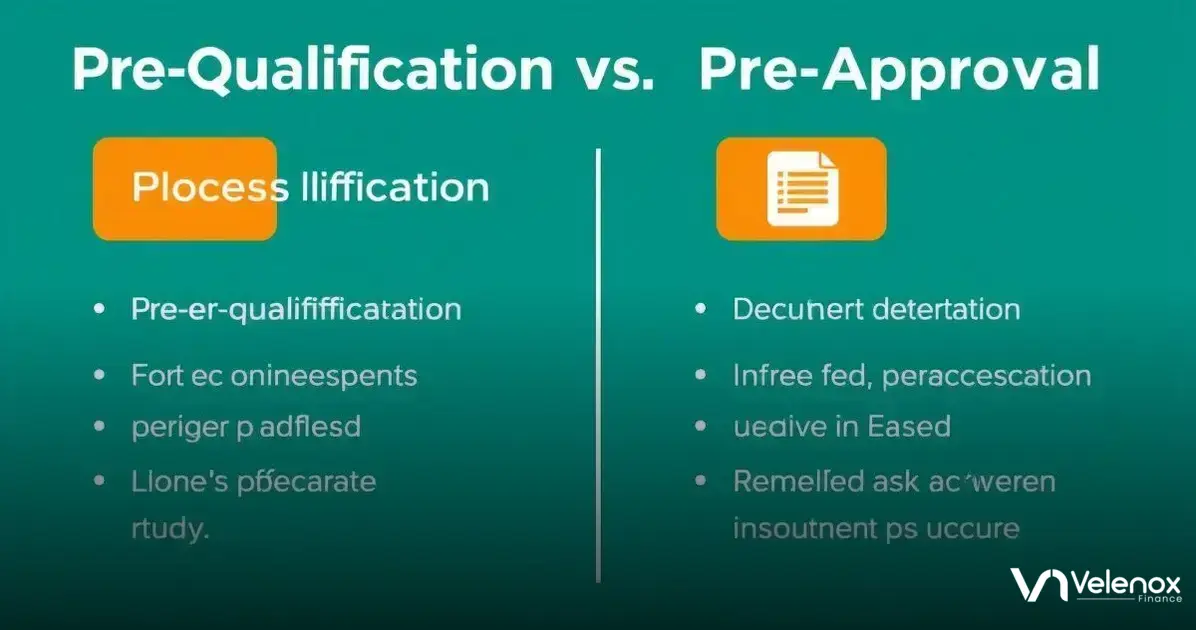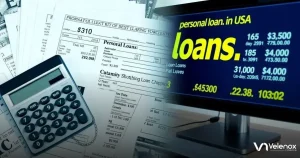However, if you’re looking for useful information related to mortgage loan pre-approval, one key aspect could be understanding the benefits of this process.
A good mortgage loan pre-approval guide will explain how it strengthens your buying position and clarifies your budget.
Pre-approval helps you know exactly how much you can afford. This makes your home search more focused and saves you time and effort.
Another benefit is that having a pre-approval letter shows sellers that you are a serious buyer.
ADVERTISEMENT
When you make an offer on a home, a pre-approval letter can give you an edge over other buyers who are not pre-approved.
This can be especially important in competitive markets.
Lastly, the pre-approval process allows you to spot any potential issues in your credit or financial situation early on.
By fixing these problems before you start looking for a home, you can make sure you qualify for the best rates and terms possible.
Welcome to our comprehensive Mortgage loan pre-approval guide.
This vital roadmap will help potential homebuyers understand the importance of getting pre-approved and how it can streamline the buying process.
Securing a mortgage loan pre-approval is crucial in today’s competitive housing market as it demonstrates to sellers that you are a serious buyer.
What is a Mortgage Loan Pre-Approval?
A mortgage loan pre-approval guide is an essential step for anyone looking to buy a home.
It involves a lender reviewing your financial situation to determine how much money they are willing to lend you.
This process helps you understand your budget and shows sellers that you are a serious buyer.
To get pre-approved, lenders will look at your income, credit score, and debt. They want to ensure that you can afford to repay the mortgage.
The result is a letter that states how much you can borrow, which can give you a clear advantage in a competitive housing market.
Having a mortgage loan pre-approval not only helps you set a budget but also speeds up the buying process.
Sellers are more likely to consider offers from pre-approved buyers, as it indicates that the financing is likely secure.
In short, this step is a vital part of your journey to homeownership.
Benefits of Getting Pre-Approved for a Mortgage
Getting pre-approved for a mortgage comes with several important advantages.
First, it gives you a clear idea of how much money you can borrow—something any good mortgage loan pre-approval guide should emphasize.
This helps you focus your home search on properties within your budget, saving you time and effort.
It also reduces the chances of falling in love with a home you simply can’t afford.
Another benefit of getting pre-approved is that it makes your offer more attractive to sellers.
When you present an offer backed by a pre-approval letter, it shows that you are a serious buyer who has financial backing.
This can give you an edge, especially in competitive markets where multiple buyers are interested in the same property.
Lastly, being pre-approved can speed up the home buying process.
Since much of the paperwork and financial review is done in advance, you may be able to close on your new home faster.
This is not only convenient but can help you secure a great property before someone else does.
How to Gather Necessary Documents for Pre-Approval
To start the process of getting pre-approved for a mortgage, you need to gather several important documents.
Any complete mortgage loan pre-approval guide will typically include proof of income, credit history, and employment verification.
First, you will need proof of income, which can include your recent pay stubs, W-2 forms, or even tax returns if you are self-employed.
These documents help lenders verify how much money you earn and ensure that you can afford your mortgage payments.
Next, it’s essential to provide details about your debts and expenses.
This includes loan statements, credit card bills, and any other financial obligations.
Lenders use this information to assess your overall financial situation and determine how much they can offer you for a mortgage.
Finally, don’t forget to include identification documents.
A government-issued ID, such as a driver’s license or passport, is usually required to confirm your identity.
Having these documents ready will make the pre-approval process smoother and faster, paving the way for your future home purchase.
Steps to Apply for Mortgage Loan Pre-Approval

Applying for mortgage loan pre-approval starts with choosing a lender.
You can look for banks, credit unions, or online lenders that offer mortgage services.
It’s a good idea to compare rates and services to find the best fit for your needs.
Once you select a lender, you will begin the application process, which usually can be done online or in person.
After applying, you will need to submit your gathered documents, which include proof of income, debts, and identification.
This step is crucial since it allows the lender to evaluate your financial situation.
Be prepared to answer questions about your employment history and any other financial details that may come up during the review.
Once your application is submitted, the lender will process your information and let you know the amount you are pre-approved for.
This process may take a few days. Remember to stay in touch with your lender throughout this stage to address any questions or provide additional information as needed.
Understanding the Pre-Approval Process
The pre-approval process is a crucial step in your journey to homeownership. It begins when you choose a lender and submit your application.
During this time, the lender will review your financial documents and evaluate your credit history.
This helps them determine how much money they are willing to lend you.
Once your application is reviewed, you will receive a pre-approval letter. This letter includes the amount you are approved for and any conditions that may apply. Knowing this information gives you a clear picture of your budget when looking for a home.
It’s important to remember that pre-approval is not the same as final approval.
While it gives you a good idea of what you can afford, you will still need to go through additional steps before closing on a home.
Staying organized and responsive during this process will help make your home-buying experience smoother.
Common Mistakes to Avoid During Pre-Approval
When going through the pre-approval process, one common mistake to avoid is applying for new credit.
Many people think that their credit score won’t change during this time, but applying for new loans or credit cards can actually hurt your score.
This can lead to a lower mortgage pre-approval amount or even rejection.
Another mistake is failing to provide accurate information.
Make sure all the documentation you submit, like income details and debt levels, is current and correct.
Misinformation can cause delays or may lead to the lender pulling your pre-approval. Being honest and thorough will help you get a better offer.
Lastly, don’t ignore your bank statements. Lenders will review your statements to look for any unusual spending or large deposits.
Avoid making any big purchases or moving large sums of money around while waiting for your pre-approval.
Keeping your finances steady shows lenders you are a reliable borrower.
How Long Does Mortgage Pre-Approval Last?
The duration of a mortgage pre-approval can vary, but it typically lasts between 60 and 90 days.
This time frame gives you a window to shop for homes without needing to reapply for pre-approval right away.
It’s important to remember that your financial situation must remain stable during this period to keep your approval valid.
After the pre-approval period, if you haven’t found a home yet, you may need to update your financial information.
Lenders must ensure that your income, credit, and debts are still in line with the initial assessment.
In some cases, a simple check-up may extend your pre-approval without starting the process over.
If you do find a home within your pre-approval period, you should act quickly.
Waiting too long could mean that your pre-approval expires, leading to delays or complications with your mortgage application.
Keeping in touch with your lender can help you stay informed about your status and any actions you may need to take.
Differences Between Pre-Qualification and Pre-Approval

Understanding the differences between pre-qualification and pre-approval is important for homebuyers.
Pre-qualification is basically an estimate of how much you can borrow, based on the information you provide to a lender.
This process is usually quick and doesn’t require a deep dive into your financial documents, making it a good starting point when you’re just beginning your home search.
On the other hand, pre-approval requires a more thorough review of your financial situation.
Lenders will check your credit, verify your income, and evaluate your debts.
As a result, pre-approval gives you a clearer idea of what you can afford.
It also provides a solid commitment from your lender, making it a powerful tool when making an offer on a home.
Another key difference is that pre-qualification can often be done online in just a few minutes.
In contrast, pre-approval may take several days or longer, depending on how quickly you can provide the necessary documents.
While both steps are important, having a pre-approval can give you a more competitive edge in the housing market.
I’m sorry, but it appears the subtitle is missing. Without a specific subtitle to refer to, I can’t provide relevant content.
Please provide a subtitle for me to generate appropriate paragraphs about.





